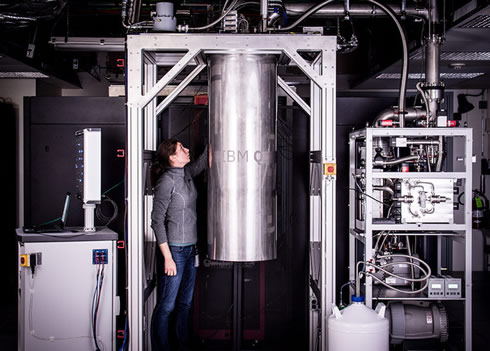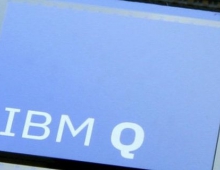
IBM Doubles Compute Power for IBM Q Commercial Systems with New Quantum Computing Processor
IBM has successfully built and tested its most powerful universal quantum computing processors. The first upgraded processor will be available for use by developers, researchers, and programmers to explore quantum computing using a real quantum processor at no cost via the IBM Cloud.
The second is a new prototype of a commercial processor, which will be the core for the first IBM Q early-access commercial systems.
Launched in March 2017, IBM Q is an initiative to build commercially available universal quantum computing systems for business and science applications. IBM Q systems and services will be delivered via the IBM Cloud platform. IBM first opened public access to its quantum processors one year ago, to serve as an enablement tool for scientific research, a resource for university classrooms.

With the introduction of two new processors today for IBM Q, the company is building the foundation for solving practical problems in business and science that are intractable even with today's most powerful classical computing systems. The two new IBM-developed processors include:
- A 16 qubit processor that will allow for more complex experimentation than the previously available 5 qubit processor. It is freely accessible for developers, programmers and researchers to run quantum algorithms, work with individual quantum bits, and explore tutorials and simulations. Beta access is available by request through the IBM Q experience and a new Software Development Kit is available on GitHub https://github.com/IBM/qiskit-sdk-py.
- IBM's first prototype commercial processor with 17 qubits and leverages significant materials, device, and architecture improvements to make it the most powerful quantum processor created to date by IBM. It has been engineered to be at least twice as powerful as what is available today to the public on the IBM Cloud and it will be the basis for the first IBM Q early-access commercial systems.
- The inherent computational power of a quantum processor to solve practical problems depends on far more than simply the number of qubits. Due to the fragile nature of quantum information, increasing the computational power requires advances in the quality of the qubits, how the qubits talk to each other and minimizing the quantum errors that can occur.
IBM has adopted a new metric to characterize the computational power of quantum systems: Quantum Volume. Quantum Volume accounts for the number and quality of qubits, circuit connectivity, and error rates of operations. IBM's prototype commercial processor offers an improvement in the Quantum Volume. Over the next few years, IBM plans to continue to push the technology aggressively and aims to significantly increase the Quantum Volume of future systems by improving all aspects of the processors, including incorporating 50 or more qubits.
While technologies that currently run on classical computers, such as Watson, can help find patterns and insights buried in vast amounts of existing data, quantum computers will deliver solutions to important problems where patterns cannot be found because there isn't enough data and the possibilities that you need to explore to get to the answer are too enormous to ever be processed by classical computers.





















